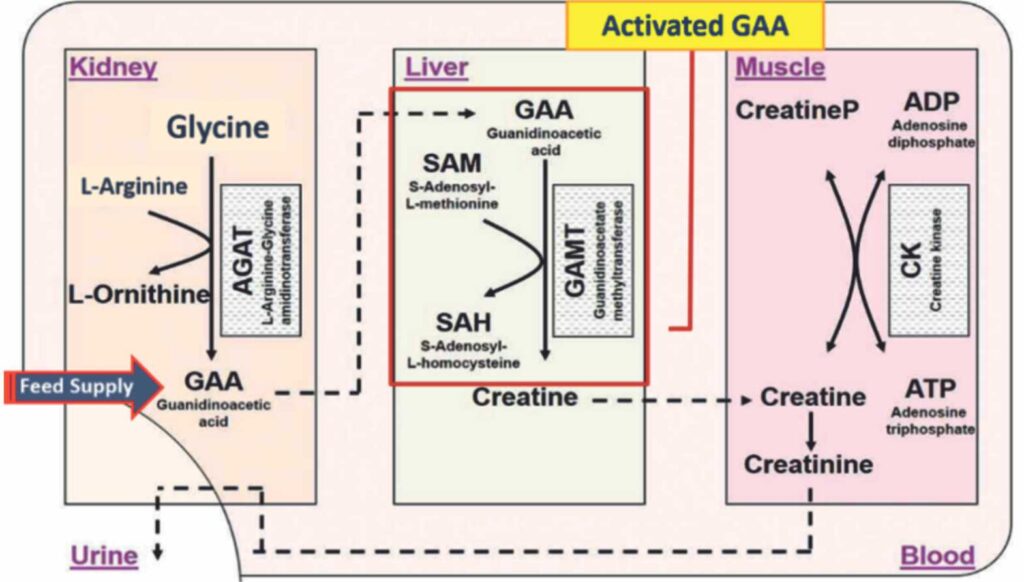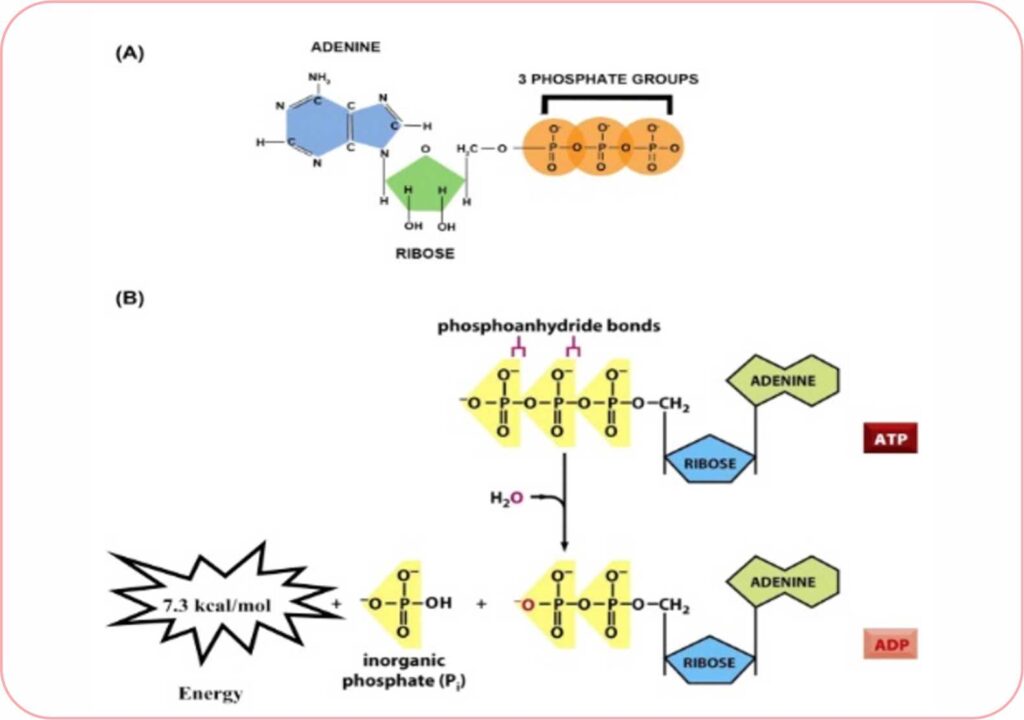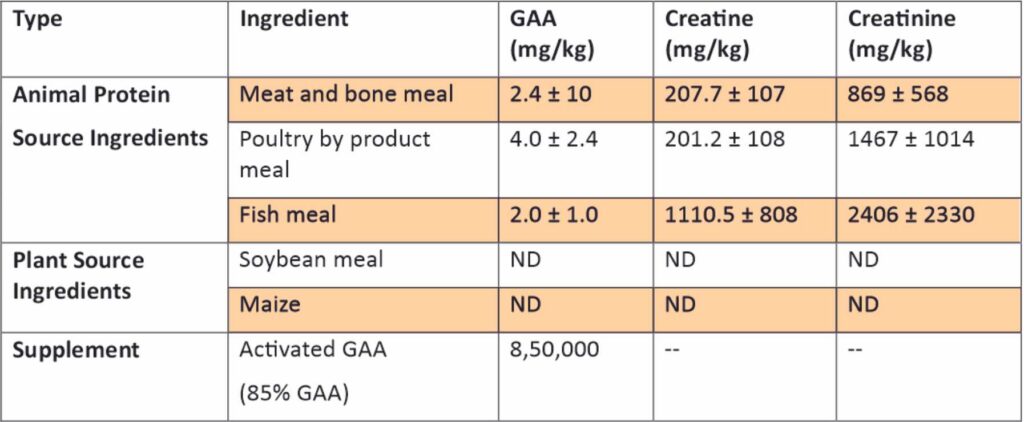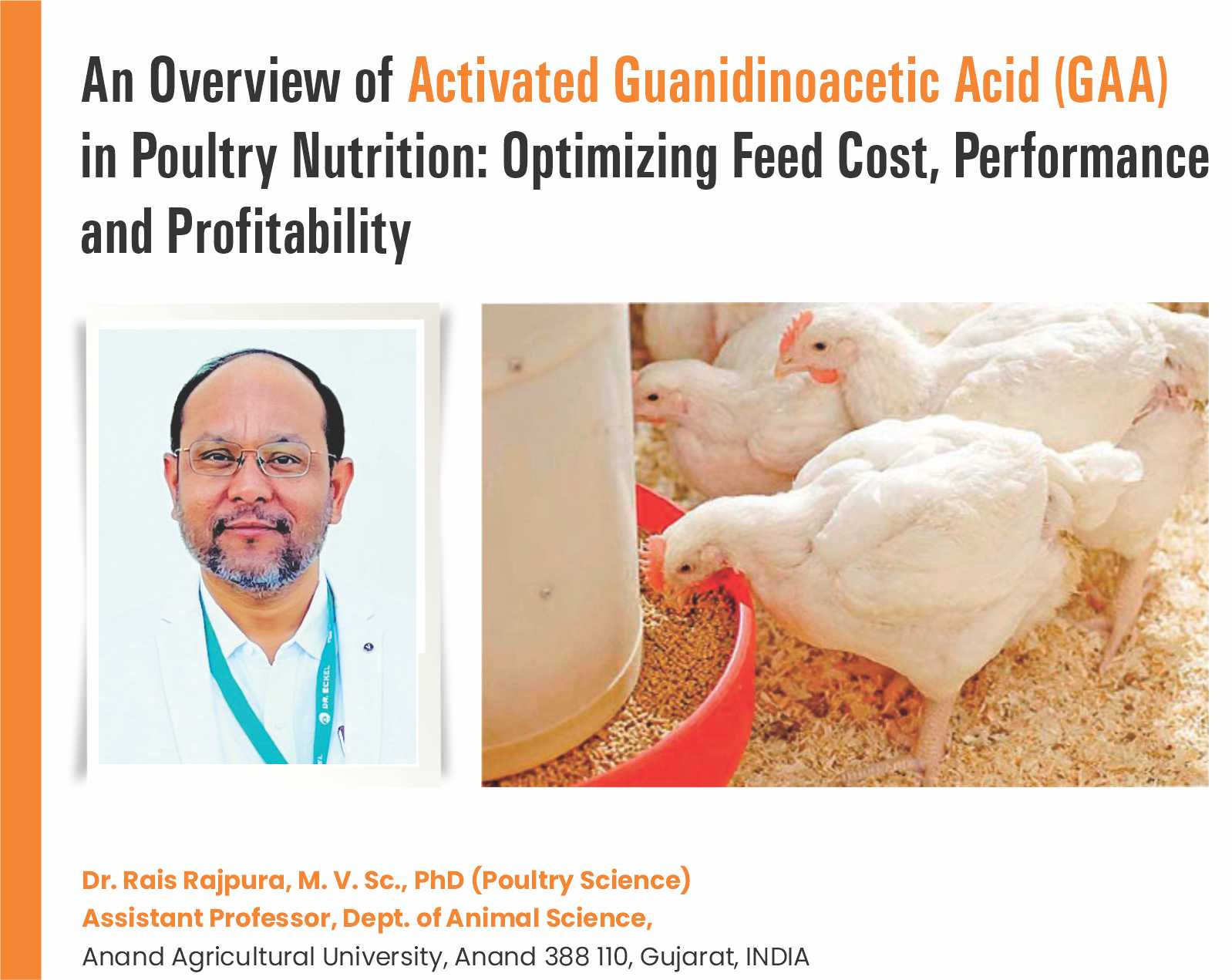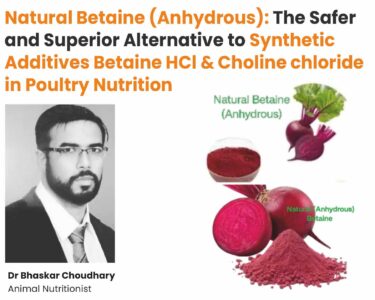
Poultry production is one of the most advanced agricultural industries, playing a key role in the global food supply. While the poultry industry works to meet the rising demand for high-quality protein, the availability and cost of feed ingredients remain significant challenges for the poultry sector. Poultry feed accounts for more than 70% of total production costs, making it the largest expense in poultry farming. Fluctuations in the prices of key ingredients like corn and soybean meal, driven by global markets and climate conditions, significantly impact feed costs. Moreover, dependency on corn and oil as major energy sources in poultry feed, along with competition for these commodities from biofuel and human food industries, further drives prices up the poultry feed cost.
Ways (Strategies) to Reduce Poultry Feed Cost
1. Feed cost optimization through least cost formulation by use of software and precision nutrition by use of synthetic amino acids i.e. Lysine, Methionine, Threonine, Valine, Tryptophan, Arginine, etc. is a common practice followed by industry since the last three decades.
2. Enhancing dietary energy utilization is important and constantly under investigation. Application of feed additives i.e. exogenous enzymes (Amylase, Xylanases, ß-glucanase, α-Galactosidase, β-Mannanase, Protease, Phytase, etc.), and fat emulsifier to improve digestion and improve the availability of nutrients for absorption from the gut. By using an enzyme in poultry feed, poultry producers can reduce feed costs.
3. Cellular Energy: A key strategy for enhancing cellular metabolic efficiency is the use of Guanidinoacetic acid (GAA). GAA (C3H7N3O2) is an amino acid derivative, formed de-novo from L-arginine and L-glycine. It is the only precursor for creatine which plays a significant role in energy metabolism. GAA plays a crucial role in supporting cellular metabolism by ensuring optimal ATP availability, the primary energy source for cellular functions.
GAA, Adenosine Triphosphate (ATP), and Cellular Energy
After feed digestion, nutrients such as glucose, amino acids, and fatty acids are absorbed into the bloodstream and delivered to cells, where they are used to produce Adenosine Triphosphate (ATP) through various metabolic pathways. ATP serves as the cell’s primary energy source, often referred to as the “energy currency” because its stored energy is readily released when the bond between its second and third phosphate groups is broken, generating about 8 kcal/mole upon conversion to adenosine diphosphate (ADP).
ATP is fundamental for energy-intensive processes like muscle growth, egg production, sperm motility, nutrient absorption, immune response, and heat stress resilience.
Birds need more ATP & ATP deficiency can occur in the body in various conditions
- Rapid & fast growth -Where important amounts of ATP are absorbed for protein synthesis
- Excitement or stress – Not only for escape but also for macrophages to fight pathogens
- Low oxygen supply – Leading to low ATP production
- Disturbed energy metabolism -Impaired mitochondrial function (Oxidative stress)
- Low feed consumption especially in extreme summer
By ensuring a continuous supply of ATP, poultry can achieve better growth rates, improved reproductive performance, enhanced feed conversion efficiency, and overall health.
Guanidinoacetic acid (GAA) plays a key role in cellular energy metabolism because it is the single immediate precursor of creatine. Creatine converts to creatine phosphate which is a key energy reserve in the body, and it helps to avoid the depletion of cellular ATP through the immediate provision of high-energy phosphates to regenerate the ATP molecule from adenosine diphosphate.
Although birds synthesize GAA and creatine from glycine and arginine amino acids, the endogenous production is insufficient to meet the demands of high performance and growth of modern broilers & breeders. So, GAA supplementation via the diet is beneficial for poultry. GAA requires the body’s nutrients for methylation and transferase enzyme to convert into creatine, which can be compromised under several situations such as climatic and production stress, leading to poor creatine delivery and reduced performance. In contrast, activated GAA (GAA along with methyl donor and transferase enzymes) bypasses these processes (methylation and enzyme synthesis), converting more efficiently into creatine in the body, ensuring high creatine levels, energy-sparing activity, arginine-sparing activity, and performance.
(Synthesis and metabolism of Guanidinoacetic acid (Image taken Krueger et al., 2010 & modified)
(Breakdown of ATP and release Energy)
The formation of GAA from L-Arginine and Glycine is regulated by a negative feedback mechanism involving both serum creatine and ornithine concentrations on L-Arg: Gly amidino transferase enzyme activity. However, dietary GAA supplements would bypass this rate-regulating mechanism. Therefore, increasing the dietary supply of L-arginine and Glycine would not increase creatine synthesis or its concentrations in muscle tissue beyond such regulated levels. De Groote, Braun, and Dilger (2018) reported muscle and serum creatine levels to be higher with supplemental GAA, compared to L-Arginine.
GAA (mg/kg) & Creatine (mg/kg) in different Feed Ingredients
Creatine is available only in animal protein-based feed ingredients. Its availability from external sources is questionable because creatine is heat-labile, and the rendering process temperature affects its levels in feed. A plant-based (vegetable) diet and its ingredients do not contain GAA and creatine.
Table 1. Feed ingredients contain Guanidinoacetic acid (GAA), creatine, and creatinine. (Krueger, Damme, and Lemme 2010).
Creatine requirements of modern broilers (adapted & modified form Khajali, et.al (2020)
A 21-day-old broiler chicken (985 g on average) with an average daily weight gain of 75 g (Aviagen 2019) would require 169 mg creatine.
The calculation is based on the assumption that 50% of weight gain is muscle (Kallweit et al., 1988) and muscle tissue contains 4.5 g/kg creatine (Lemme et al., 2007). For a more exact calculation of the CREA requirement, its turnover needs to be considered, as suggested by Tossenberger et al., (2016). Heat instability is the main issue that limits the use of creatine as a feed supplement for poultry (Vranes et al., 2017) because poultry diets are most often subjected to feed processing (pelleting) which imposes heat exposure of 70°C or higher (Slominski 2011).
Supplementation of GAA in Poultry Feed
GAA, a direct precursor of CREA, has recently attracted attention as a feed additive for poultry due to its high thermal stability (Vranes et al., 2017), which makes it relatively stable during pelleting or extruding.
- GAA has been officially registered as an animal feed additive by the EFSA (European Food Safety Authority) (2009; 2022) & the US-FDA (U. S. Food and Drug Administration)
- GAA supplements account for 40% less cost compared to creatine.
- GAA exerts many non-creatine roles, including the stimulation of insulin secretion, neuromodulation, and vasodilation.
- GAA has an arginine-sparing potential of up to 149% in broilers, thus arginine is more readily available for metabolic processes other than GAA production
Effect of GAA on Poultry Performance
– Reduce feed cost & lower production cost
– Improve feed conversion ratio (FCR)
– Increase body weight gain, breast meat yield & dressing percentage
– Reduce muscle degeneration problems
– Improve semen quality & fertility – male breeders
– Improve chick quality – female breeder
– Reduce heat stress mortality & ascites
How GAA Optimizes Poultry Performance: In-Depth Look
1. Reduce feed cost (lower production cost) & Improve feed conversion ratio (FCR)
o Guanidinoacetic acid (GAA) is key in creatine synthesis, enhancing energy storage and transfer within muscle cells. Creatine, stored as phosphocreatine, supports the quick regeneration of ATP, which powers energy-intensive processes like muscle contraction, growth, and protein synthesis. GAA supplementation in poultry diets optimizes energy recycling, resulting in improved energy utilization and performance.
o As GAA enhances the bird’s endogenous creatine production, improving energy efficiency. This cellular energy efficiency allows nutritionists to reduce feed costs by lowering metabolizable energy (ME) by 30-60 kcal/kg at an inclusion rate of GAA @ 600 g/ton without affecting growth performance while reducing energy-rich ingredients like maize & oil.
o Furthermore, GAA is effective in low-protein diets also, enabling reduced crude protein levels without compromising performance. Studies show that supplementing GAA at 600-1200 g/ton in low-CP diets maintains optimal growth and carcass quality while reducing protein-rich ingredients like soybean meal.
o GAA has an arginine-sparing effect that reduces dietary arginine requirements by 10-15%, freeing up arginine for other vital functions and lowering feed costs.
o Lastly, GAA supplementation significantly improves the feed conversion ratio (FCR), reducing feed intake per unit of weight gain. Research indicates that GAA can improve FCR by 4.5 to 8.8 points, leading to more efficient growth and lower overall feed costs.
2. Increase body weight, breast meat yield, and meat quality
o GAA supplementation increases creatine availability, supporting enhanced muscle energy metabolism. This translates to improved muscle growth in fast-growing broilers. Better energy delivery to muscle cells means more efficient feed utilization, promoting higher meat yield. Research has shown that supplementing broiler diets with GAA @ 600-1200 g/ton feed, leads to noticeable performance improvements, including significant gains in breast muscle mass, a highly valuable part of the poultry carcass. This contributes to both higher carcass quality and profitability.
o Dietary supplementation of GAA @ 1200 g/ton feed contributed to improving meat quality via ameliorating muscle energy expenditure and delaying anaerobic glycolysis of broilers. GAA supplementation in broiler diets may be an effective tool for improving meat quality by reducing myopathy severity including woody breast, white striping, and woody-like tender in heavy broilers.
3. Role of Guanidinoacetic Acid (GAA) in Broiler Breeders
o Guanidinoacetic Acid (GAA) supplementation offers multiple benefits in broiler breeders, enhancing fertility, hatchability, and chick quality. Studies have shown that GAA supplementation improves egg production and consistency. It also increases breeder vitality, enabling efficient mating in males and enhancing reproductive performance in deep litter systems.
o In male breeders, GAA plays a crucial role in improving fertility by enhancing sperm quality and viability. It supports the functioning of Sertoli cells, crucial for spermatogenesis, and increases ATP availability, resulting in higher sperm motility and better penetration capabilities. Improved sperm quality leads to higher fertility rates, and GAA supplementation helps prevent age-related reproductive deficits.
o In female breeders, GAA supplementation boosts creatine content in hatching eggs, supporting embryo development during crucial stages like organogenesis and skeletal formation. This leads to better hatchability, chick vitality, and postnatal growth.
o Supplementation of broiler breeder diets with GAA @ 1000-1200 g/ton feed is a promising strategy for optimizing the productivity, fertility, and hatchability of breeder birds, ultimately contributing to improved chick performance and overall flock efficiency.
4. Effect of GAA on heat stress mitigation
o During acute heat stress, the cellular energy demand increases and during chronic heat stress, mitochondrial adenosine triphosphate (ATP) generation is reduced. In addition, heat stress induces higher utilization of muscle energy reserves in the form of glycogen. On this note, it could be perceived that enhancing the cellular creatine-phosphocreatine energy shuttle system might offer benefits for the broiler subjected to heat stress. Indeed, this system functions as a backup to the adenosine ADP-ATP cycle to store and mobilize energy when required on short notice. GAA feeding improved survival during heat stress, supported by lower panting frequency. Another primary physiological response during HS is the increased blood flow to the body surface or upper respiratory tract to dissipate internal body heat (Yahav et al., 1997). Therefore, the blood flow to some visceral organs is significantly reduced. In this respect, Arginine plays a pivotal role as it is the nitrogenous precursor for the endogenous synthesis of nitric oxide by nitric oxide synthase. Nitric oxide is a potent vasodilator that directly relaxes vascular smooth muscle and modulates or inhibits the production and release of vasoconstrictors such as serotonin. Higher Arginine bioavailability might thus be beneficial for heat-stressed birds, as it has been demonstrated in Pekin ducks (Zhu et al., 2014). Furthermore, conclusively, it was demonstrated that dietary-supplemented GAA is able to spare Arginine in broilers (Dilger et al., 2013; DeGroot et al., 2018). Consequently, more Arginine would be available for its protein and other nonprotein functions, such as a precursor for nitric oxide and polyamines. GAA supplementation improved feed conversion ratio and survival, with the largest benefits in the finisher period when birds were subjected to heat stress.
Conclusion
In conclusion, Guanidinoacetic Acid (GAA) supplementation in poultry diets offers a multiple benefit in poultry. GAA supplementation in poultry diets allow to reduce feed cost, improves feed conversion ratios, increases body weight gain, and boosts breast meat yield. It effectively supports muscle growth, mitigates muscle degeneration issues, and enhances meat quality by reducing the severity of myopathies. In broiler breeders, GAA improves reproductive performance by increasing sperm quality and fertility in males while boosting egg and chick quality in females. Additionally, GAA enhances resilience to heat stress, leading to improved survival rates and economic profitability under challenging conditions. This makes GAA a valuable tool for optimizing poultry productivity, profitability, and overall flock health.
